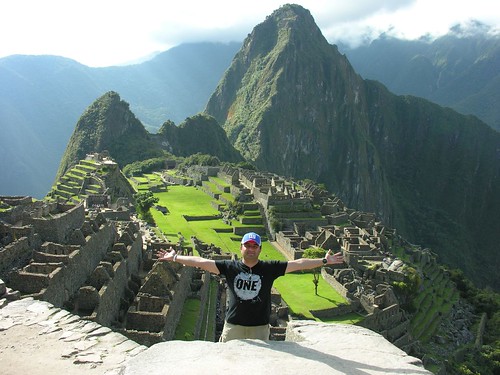
One of the most iconic sites in Latin America is Machu Picchu. Whenever someone thinks of taking Peru vacations, the classic photo of the Inca citadel sitting high in cloud forest comes to mind.
However, it’s no secret that Machu Picchu has large numbers of visitors all year round. If you’d like to visit the site and get a unique experience that is probably better than most other visitors, here are some tips.
1) Get there early
The idea of dragging yourself out of bed at 4.30 am may not be very appealing, but it will be worth it when you find yourself at the front of the queue for entrance to the site. You’ll also get the opportunity to be one of the 400 visitors with permission to climb the spectacular slopes of nearby Huayna Picchu, as this is only available to early arrivals.
2) Start from the wrong end
Most visitors to Machu Picchu take a conventional path around the site, working their way up the nearest terraces to the guard house to take their own version of the iconic photo of the site with Huayna Picchu in the background. You’ll get a dose of near-solitude if you head straight to the other end of the site near the base of Huayna Picchu and work backwards.
3) Arrive by foot
It may be hard work, but you’ll feel rewarded when you finally get to the site instead of rumbling along in a bus with everyone else. Two main options exist:
Option 1: The Inca Trail
A 3 or 4 day hike along the best-preserved section of ancient Inca highway, the route takes you through an incredible variety of landscapes before finishing at the Sun Gate that overlooks the site. It’s a very popular route, so make sure you book up to 3 months in advance...
Option 2: Walking from Aguas Calientes
If you are staying in the nearby village of Aguas Calientes, it is possible to walk up to the site first following the river then using a steep flight of stairs through tropical foliage. Visitors are recommended to make an early start and to carry a flashlight.
4) See the site from all angles
Check out the site from more than the classic Gate House angle. Try climbing Machu Picchu mountain itself – this is a fairly strenuous climb but offers fantastic views from the top of both the site and the surrounding mountains.
Other options for a different angle on Machu Picchu include looking down from Huayna Picchu and making the 45 minute walk back up the Inca Trail from the main site to the Sun Gate. You’ll be surprised how few people make the effort...
5) Get a good guide
There are a lot of conflicting theories about Machu Picchu’s history, and it is easy to get spun a tall tale by a guide. By travelling with a reputable tour operator you can get escorted around the site by an expert who puts a lot of time and effort into staying on the cutting edge of discoveries about Machu Picchu. This will definitely give you a unique perspective on the site. Be sure to choose a fluent English speaker!
6) Stay the night in Aguas Calientes
Try to avoid the typical scenario of cramming a trip to Machu Picchu into a single day. If you are prepared to stay the night in nearby Aguas Calientes you’ll have the benefit of a peaceful afternoon on the site after all the day trippers have left to rush back to Cusco. You’ll be amazed how much quieter the site is towards the end of the day. This also allows you to get to the site when it first opens on the following day.
Have you got any other tips to have a unique trip to Machu Picchu? What was your visit like?
Author: Gary Sargent - Escaped to Peru / Escaped to Latin America






